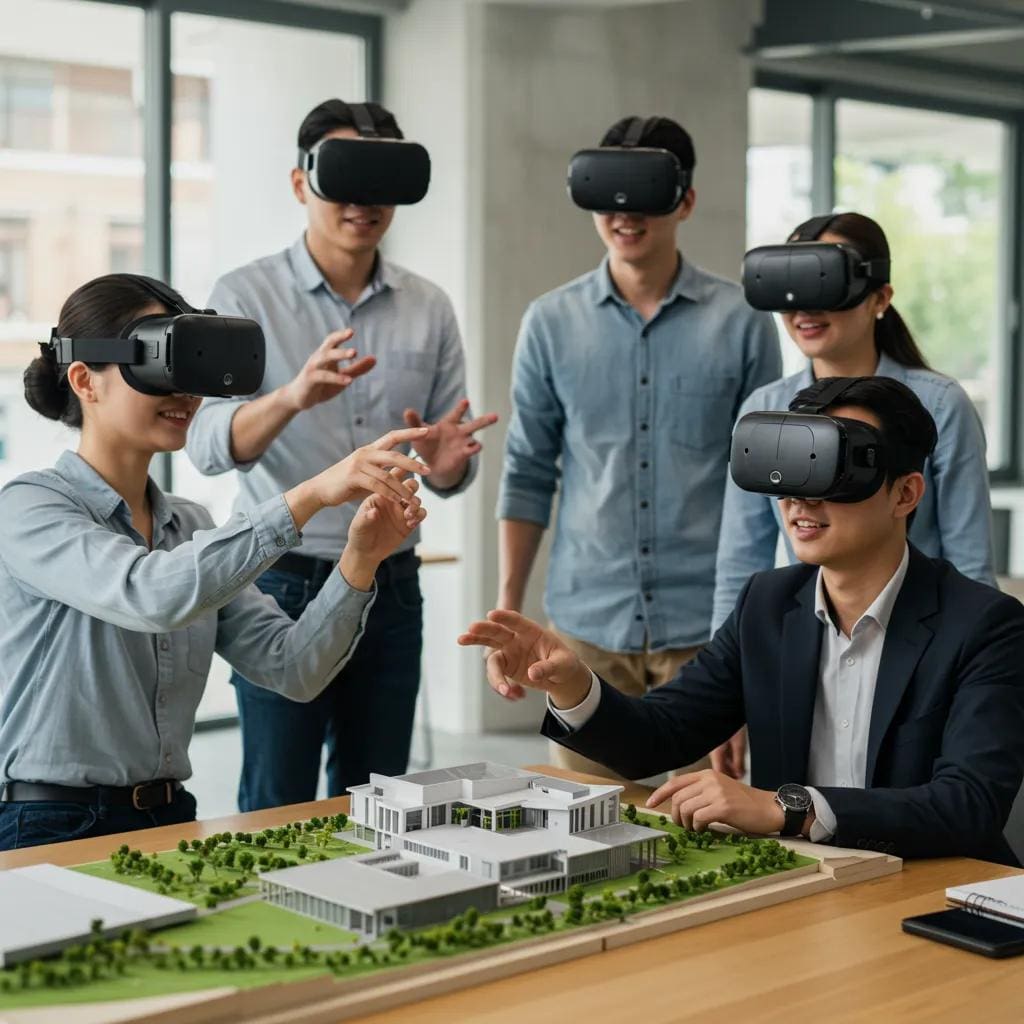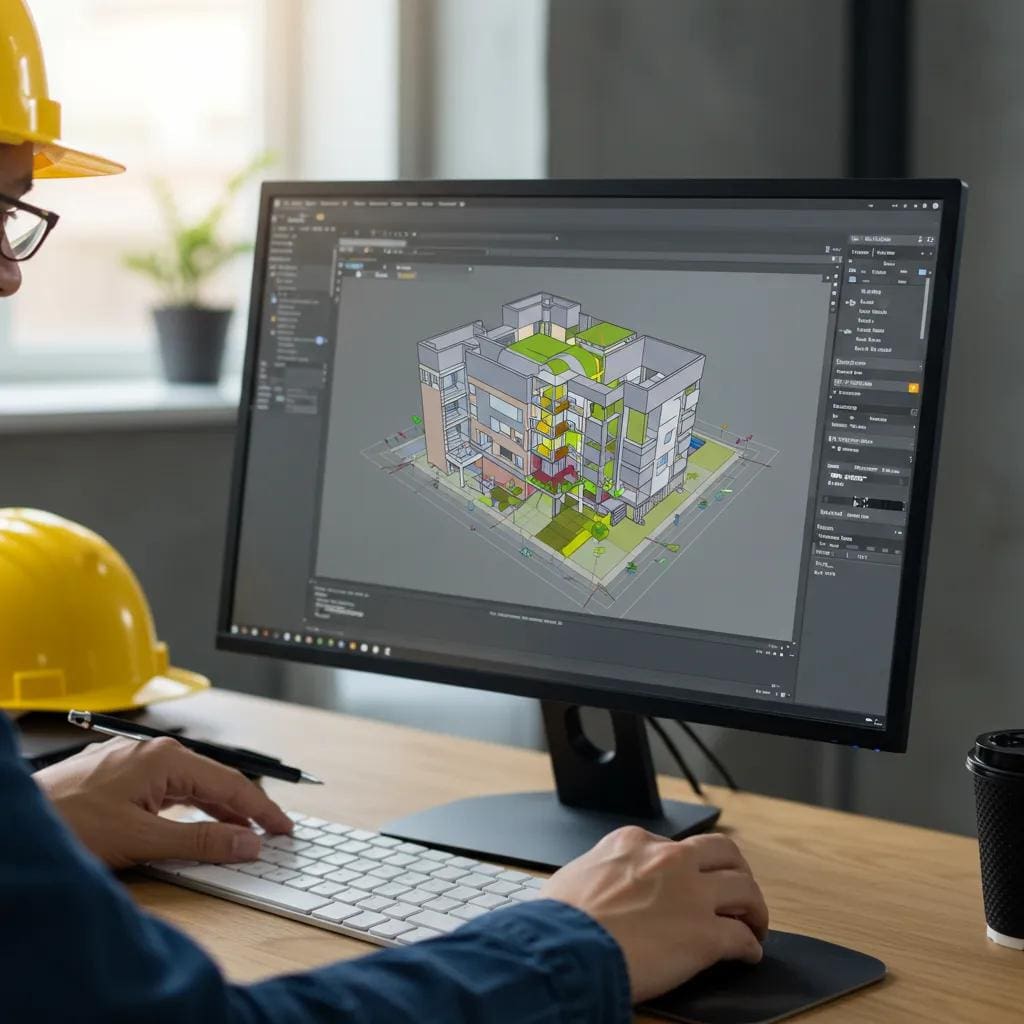The Future of Design: How Our Architecture Firm Cardiff Are Embracing Virtual Reality for Innovative Architectural Solutions
Architectural innovation is being revolutionised as our architecture firm in Cardiff integrates virtual reality to reimagine spaces with unprecedented clarity. Virtual reality in architectural design transforms 2D plans into immersive environments that reveal scale, light and spatial relationships before construction begins. This guide explores the key benefits of VR architecture, essential software tools for Cardiff projects, immersive walkthrough best practices, our bespoke VR workflow, emerging technologies beyond VR, common industry enquiries and compelling reasons to partner with our Cardiff team. By addressing traditional design limitations and showcasing practical applications, we deliver actionable insights for clients, designers and stakeholders alike.
What Are the Key Benefits of Virtual Reality in Architectural Design?
Virtual reality in architectural design offers immersive visualisation, real-time collaboration and error reduction from concept through construction. By simulating lifelike environments, VR enhances understanding of scale, materials and lighting, while enabling early detection of design flaws and more informed sustainability decisions. These combined advantages contribute to faster approvals, cost savings and deeper client engagement.
How Does VR Enhance Visualisation and Immersion in Architecture?
VR enhances visualisation by creating fully rendered three-dimensional spaces that convey true proportions and light dynamics. This immersive experience allows architects and clients to walk through virtual models, perceive material textures and assess natural illumination under different conditions.
- True Scale Perception: Users experience accurate room dimensions and circulation paths.
- Dynamic Lighting Simulation: Daylight and artificial light can be adjusted in real time.
- Material Realism: High-resolution textures convey finishes from timber grain to polished concrete.
These immersive insights drive clearer design decisions and prepare stakeholders for the next phase of development.
In What Ways Does VR Revolutionise Client Engagement and Communication?

VR fosters client engagement by turning passive plan-review meetings into interactive design sessions where stakeholders explore and comment on virtual models. Live annotation and voice-guided tours bridge imagination gaps, making feedback immediate and precise.
- Interactive Walkthroughs enable clients to “step inside” proposed spaces and suggest changes on the spot.
- Collaborative Mark-ups let architects adjust layouts in real time based on stakeholder input.
- Emotional Connection deepens as clients experience virtual environments rather than interpreting flat drawings.
This elevated engagement streamlines approvals and builds trust in project outcomes.
VR for Enhanced Client Engagement
Virtual Reality (VR) has significantly transformed client presentations in architecture, enabling immersive walkthroughs that enhance understanding and satisfaction. Clients can experience designs firsthand, leading to clearer feedback and accelerated approval cycles.
This research highlights the benefits of VR in improving client engagement and communication, which aligns with the article’s emphasis on the same topic.
How Does VR Streamline the Design Process and Reduce Errors?
VR streamlines design workflows by integrating with BIM platforms to identify clashes and spatial conflicts long before construction begins. By visualising complex assemblies, teams can rectify issues such as misaligned structural elements or MEP routing errors.
| Workflow Stage | Traditional Challenge | VR Advantage |
|---|---|---|
| Concept Development | Limited spatial understanding | Immediate 3D immersion highlights layout issues |
| Design Coordination | Clash detection via 2D overlays | Real-time model exploration reveals conflicts |
| Client Review | Static render feedback loops | Live adjustments reduce revision cycles |
Early problem-solving in VR reduces costly on-site changes and accelerates project delivery.
Can VR Support Sustainable and Informed Architectural Decisions?
VR supports sustainability by visualising building performance metrics—such as solar gain, shading and energy consumption—within immersive models. Simulated environmental data helps architects optimise orientation, façade design and material choices for minimal carbon footprint. For instance, a virtual solar study guided rooftop photovoltaic placement on a Cardiff school project, maximising annual energy yield. These informed decisions align designs with green building standards and stakeholder objectives.
Which VR Software and Tools Are Essential for Architects in Cardiff?
Essential VR software empowers Cardiff architects to produce real-time, lifelike models and collaborate seamlessly across teams. By integrating leading platforms and plugins with existing BIM workflows, our firm ensures design precision, visual fidelity and efficient stakeholder engagement throughout every project phase.
What Are the Leading Real-Time Rendering VR Platforms for Architecture?
The following platforms deliver high-fidelity visuals and intuitive VR experiences for architectural design:
| Platform | Rendering Engine | Key Capability |
|---|---|---|
| Enscape | Ray tracing | Instant VR sessions from Revit |
| Twinmotion | Unreal Engine core | Live landscape and weather FX |
| Unreal Engine | Physically based tools | Cinematic quality visualisation |
| Fuzor | BIM-driven integration | Clash detection in VR |
These solutions integrate directly with BIM software, enabling rapid model updates and immersive client presentations.
How Is BIM Integrated with VR Software Like Revit and ArchiCAD?

BIM integration with VR platforms streamlines data transfer and ensures model fidelity. Design elements and metadata from Revit or ArchiCAD are synchronised via dedicated plugins, preserving object properties, materials and annotations. This real-time link allows architects to iterate in VR while maintaining a central BIM database, eliminating duplication and enhancing coordination.
What VR Modelling and Collaboration Tools Facilitate Design Workflow?
Beyond rendering engines, specialised tools enrich collaborative VR workflows:
- Shapespark exports interactive web-based VR scenes for remote stakeholder review.
- Revizto centralises issue tracking within VR models, linking comments to BIM elements.
- Glue hosts multi-user VR sessions, enabling distributed teams to co-design synchronously.
- Vectary offers browser-based 3D modelling with VR export features for quick prototyping.
These collaborative platforms ensure seamless communication between architects, engineers and clients from initial concept to final delivery.
How Do Immersive VR Walkthroughs Transform Client Experiences?
Immersive VR walkthroughs provide clients with intuitive encounters of proposed buildings, accelerating comprehension and decision-making. By engaging multiple senses, VR tours foster emotional connections and drive confident approvals, replacing abstract render reviews with tangible spatial understanding.
How Should Clients Prepare for a Virtual Reality Architectural Walkthrough?
Before a VR session, clients benefit from clear preparation steps:
- Schedule Orientation: Allocate sufficient time for headset fitting and software familiarisation.
- Review Briefing Materials: Study preliminary drawings and mood boards to guide exploration.
- Identify Focus Areas: Highlight key zones—such as living spaces or communal areas—for detailed review.
- Clarify Device Settings: Ensure the VR headset is adjusted for comfort and visual clarity.
Proper preparation maximises the value of each walkthrough and streamlines feedback collection.
What Interactive Elements Enhance VR Presentations for Clients?
Interactive features elevate VR tours by making them dynamic and engaging:
- Hotspots reveal material samples or structural details on demand.
- Guided Paths direct users through curated sequences to emphasise design narratives.
- Annotation Tools allow clients to tag areas and record comments within the virtual environment.
- Scenario Switching toggles between design options—for example, daylight versus dusk lighting.
These elements enrich presentations and focus stakeholder discussions on critical design decisions.
What Are Some Successful Case Studies of VR Client Engagement in Cardiff?
In a mixed-use development at Cardiff Central Quay, our VR walkthrough reduced client revision requests by 40 percent by illustrating pedestrian flow and entrance visibility. For a sustainable office conversion in Roath, VR solar simulation informed glazing specifications, securing planning consent two weeks ahead of schedule. These examples demonstrate how immersive engagement drives efficiency, transparency and stakeholder satisfaction across diverse Cardiff projects.
VR in Architecture: Case Study
VR allows architects to step inside their designs, engage clients in immersive experiences, and enhance overall project efficiency. For example, Zaha Hadid Architects employed VR technology in their design process, allowing clients to experience proposed spaces in a fully immersive 3D environment.
This citation provides a case study example of how VR is used in architectural design, which supports the article’s discussion of VR’s practical applications.
How Is Our Cardiff Architecture Firm Integrating VR into Its Workflow?
Our Cardiff architecture firm harnesses VR to unify design, collaboration and client communication within a coherent digital process. By embedding virtual reality into every project stage, we deliver superior design clarity, faster decision cycles and measurable cost efficiencies from concept through completion.
Which VR Hardware and Software Do We Use to Deliver Immersive Designs?
Our technology stack combines high-performance hardware and software tailored for architectural excellence:
- Oculus Rift S & Quest 2 for wired and standalone experiences.
- HTC Vive Pro for high-resolution professional walkthroughs.
- Enscape integrated with Revit for on-demand VR sessions.
- Twinmotion for rapid context modelling with cinematic visuals.
- Revizto for issue management and collaborative annotation in VR.
This curated toolkit ensures reliable, lifelike environments that support every project phase.
How Does VR Integration Improve Collaboration Among Architects and Stakeholders?
VR integration fosters transparent communication by aligning teams around a single, immersive model. Through real-time multi-user sessions, architects, engineers and clients can explore designs together, identify clashes instantly and agree on solutions. This collaborative model reduces misunderstanding, accelerates approvals and builds consensus across diverse teams.
What Cardiff Projects Showcase Our VR-Enhanced Architectural Designs?
Our portfolio highlights VR innovation in projects such as:
- Bayview Residences: Virtual coastal views informed façade orientation and apartment layouts.
- Greenpoint Office Hub: VR energy studies guided sustainable glazing strategies.
- Riverside Cultural Centre: Interactive public walkthroughs shaped interior wayfinding and exhibit placement.
Each project illustrates how VR insights translate into tangible design improvements and stakeholder confidence.
What Does the Future Hold for Architectural Technology Beyond VR?
Emerging technologies are set to complement virtual reality, creating richer design ecosystems that blend physical and digital realms. By integrating augmented reality, artificial intelligence and digital twins, the built environment will evolve through continuous feedback loops between design, construction and operation.
How Will Augmented Reality (AR) Complement VR in Construction and Design?
Augmented reality overlays digital models onto real-world sites, enabling on-site verification of construction progress and precise installation guidance. AR headsets guide contractors through BIM-driven workflows, reducing misinterpretation and ensuring quality control. In design review, AR lets stakeholders visualise virtual concepts in situ before breaking ground.
What Role Will Artificial Intelligence (AI) Play in Future Architectural Design?
AI will analyse vast project datasets to optimise layouts, material selections and performance criteria automatically. Generative design algorithms will propose alternatives based on defined parameters—such as cost, sustainability and spatial requirements—freeing architects to refine and personalise solutions. These intelligent tools will accelerate iteration cycles and unlock novel design possibilities.
How Are Digital Twins Shaping the Built Environment’s Future?
Digital twins create living replicas of buildings that synchronise real-time sensor data with virtual models, enabling predictive maintenance and performance monitoring. This continuous feedback loop informs adaptive operations—from energy management to occupant comfort—long after construction completes. The integration of digital twins into design processes will bridge the gap between planning and operation, fostering smarter, more resilient buildings.
What Are Common Questions About VR in Architecture?
Professionals often seek clarity on hardware choices, presentation benefits and cost efficiencies associated with VR architecture. Addressing these topics ensures informed decisions and maximises return on investment for firms and clients alike.
What Are the Most Popular VR Headsets for Architectural Visualisation?
The following headsets balance resolution, tracking and user comfort for immersive design reviews:
| Headset Model | Display Resolution | Spatial Tracking |
|---|---|---|
| Oculus Quest 2 | 1832 × 1920 per eye | Inside-out sensors |
| HTC Vive Pro | 1440 × 1600 per eye | Lighthouse base stations |
| Valve Index | 1440 × 1600 per eye | SteamVR tracking |
| Pico Neo 3 | 1832 × 1920 per eye | Inside-out sensors |
How Does VR Improve Client Presentations and Decision-Making?
VR transforms client presentations by enabling immersive walkthroughs where stakeholders experience proposed designs firsthand. This direct exposure leads to clearer feedback, reduces reliance on abstract drawings and accelerates approval cycles by aligning expectations with virtual realities. As a result, decision-making becomes more confident, coherent and timely.
How Does VR Reduce Construction Errors and Save Costs?
By visualising complex assemblies in a virtual environment, VR uncovers design clashes and compliance issues before ground-breaking. Early detection of spatial conflicts—such as misaligned structural elements or service clashes—prevents costly on-site modifications and project delays. Quantitative studies show VR adoption can cut construction costs by up to 15-20 percent through improved coordination and fewer rework cycles.
Cost Savings with VR in Architecture
VR can lead to significant cost and time savings by identifying design flaws before construction begins, reducing the likelihood of expensive changes during the construction phase. Studies show that VR adoption can cut construction costs by up to 15-20 percent through improved coordination and fewer rework cycles.
This source supports the article’s claims about the cost-saving benefits of using VR in architecture, specifically mentioning reduced rework and improved coordination.
Why Choose Our Architecture Firm Cardiff for VR-Driven Design Innovation?
Our architecture firm Cardiff leads the way in integrating virtual reality within design processes to deliver engaging, efficient and future-proofed solutions. By combining local expertise with cutting-edge technology, we guide clients through immersive experiences that enhance understanding and unlock design potential.
How Does Our Commitment to VR Position Us as Cardiff’s Leading Innovators?
Our firm’s early adoption of VR technology has forged partnerships with software developers and VR hardware manufacturers, granting us access to beta features and exclusive training. This ongoing collaboration ensures we remain at the forefront of VR architecture trends, delivering solutions that outpace conventional methods and exceed industry standards.
What Do Clients Say About Their VR Design Experience With Us?
Clients consistently report heightened confidence and satisfaction after VR sessions:
- “Stepping into the virtual model of our new home was transformative—it streamlined approvals and clarified every design detail.”
- “VR tours of our office refit helped us make material choices faster and budget with precision.”
- “The immersive walkthrough of our cultural centre concept won board support within days.”
These testimonials reflect our commitment to transparent communication and design excellence.
How Can You Experience Our VR Architectural Services in Cardiff?
To explore our VR architecture services, simply schedule a consultation via our online form or call our Cardiff studio. We’ll provide a personalised demonstration using your project data and guide you through our immersive design process. From initial concept to final delivery, we ensure each VR session yields actionable insights that shape exceptional outcomes.
With our expertise in VR architecture and local knowledge of Cardiff’s built environment, we deliver innovative solutions that redefine the future of design. Our Cardiff-based team blends technological leadership with architectural craftsmanship to create immersive experiences that drive project success. By harnessing virtual reality, we elevate client engagement, streamline workflows and deliver sustainable, data-driven designs. Embrace the future of architecture with a partner committed to innovation, precision and lasting impact in South Wales. Contact us today to discover how VR can transform your next project.
Frequently Asked Questions
What types of projects benefit most from VR in architecture?
Virtual reality is particularly advantageous for complex projects that require detailed spatial understanding, such as residential developments, commercial spaces, and public buildings. These projects often involve intricate design elements and stakeholder input, making VR an ideal tool for visualising layouts and facilitating collaboration. By allowing clients to experience designs in an immersive environment, VR helps identify potential issues early, leading to more informed decisions and smoother project execution.
How does VR impact the timeline of architectural projects?
Integrating VR into architectural workflows can significantly accelerate project timelines. By enabling real-time collaboration and immediate feedback during design reviews, VR reduces the number of revision cycles and streamlines approvals. This efficiency allows architects to address design flaws before construction begins, minimising costly delays. As a result, projects can move from concept to completion more swiftly, ultimately enhancing client satisfaction and project delivery times.
Are there any limitations to using VR in architectural design?
While VR offers numerous benefits, there are some limitations to consider. High-quality VR experiences require significant investment in hardware and software, which may not be feasible for all firms. Additionally, the effectiveness of VR can depend on the user’s comfort with technology; some clients may find it challenging to navigate virtual environments. Lastly, VR cannot replace traditional methods entirely; it should complement existing design processes rather than serve as a standalone solution.
How can clients provide effective feedback during VR sessions?
To maximise the value of VR sessions, clients should prepare by reviewing preliminary materials and identifying specific areas of focus. During the walkthrough, they can use annotation tools to highlight concerns or suggestions directly within the virtual environment. Engaging in open dialogue with architects during the session also fosters immediate feedback, allowing for real-time adjustments and ensuring that client expectations are met throughout the design process.
What training is available for architects to effectively use VR technology?
Many software providers offer training resources, including tutorials, webinars, and workshops, to help architects effectively utilise VR technology. Additionally, firms can invest in professional development programs that focus on VR integration within architectural workflows. Collaborating with VR specialists or attending industry conferences can also provide valuable insights and best practices, ensuring that architects stay updated on the latest advancements and techniques in VR design.
How does VR contribute to sustainable architectural practices?
VR plays a crucial role in promoting sustainability by allowing architects to visualise and analyse building performance metrics, such as energy consumption and material efficiency. By simulating various design scenarios, architects can make informed decisions that optimise resource use and reduce environmental impact. This capability aligns with green building standards and helps clients achieve their sustainability goals, ultimately leading to more eco-friendly architectural solutions.
Conclusion
Embracing virtual reality in architectural design offers unparalleled benefits, including enhanced client engagement, streamlined workflows, and significant cost savings. Our Cardiff architecture firm is dedicated to leveraging this innovative technology to transform your project experience and deliver exceptional results. Take the next step towards redefining your architectural vision by scheduling a consultation with our expert team today. Together, we can create immersive designs that not only meet but exceed your expectations.
